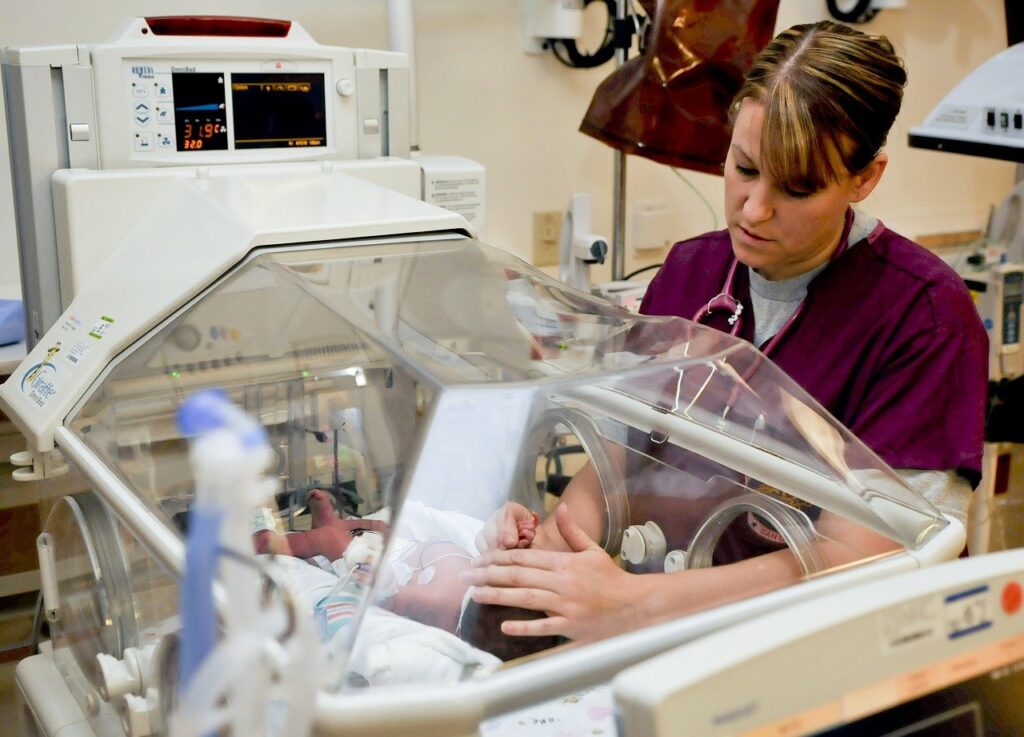If you’re a nurse, you’ve probably seen articles on the neonatal intensive care unit (NICU) infant who passed away due to bacteria from a nurse’s long nails. It stirred up an upsetting – but valuable – Internet conversation on hand hygiene. In fact, Google searches around nurse nails and NICU deaths increased 140% that week.
If the pandemic offered any silver linings, it was the renewed focus on healthcare acquired infections and hand hygiene. Proper hand hygiene and nail care help reduce disease transmission between healthcare workers and patients.
A few facts on healthcare acquired infections (HAIs):
- They impact 1 in every 25 hospitalized patients.
- They resulted in more than700,000 illnesses and 75,000 deaths in one year alone.
- The most common infections are pneumonia, surgical-site infections, and gastrointestinal infections, as well as central-line-associated bloodstream infections and catheter-associated urinary tract infections.
- 70% of these infections can be prevented through evidence-based strategies.
Which brings us back to good hand hygiene. Even a recently showered, well-groomed nurse or physician can harbor infectious bacteria under their nails. For this reason, protocols are usually strict in high-risk settings like NICU where patients are tiny and frail, and often premature with weak immune systems.
The way to enforce those protocols? Training that is both effective and convenient, according to the Centers for Disease Controls. An annual presentation isn’t always effective, but the CDC’s Project Firstline is a recurring collaboration designed to increase clinician awareness through virtual reality. Nurses and physicians can “see” the virtual germs invisible to the naked eye, helping them understand how even clean-looking hands can contaminate a vulnerable patient.
The Link Between Hand Hygiene and Patient Infection
Multiple studies have found a correlation between long nails and patient infections.
- A study published in the journal Infection Control and Hospital Epidemiology found a connection between long or artificial fingernails on nurses and an outbreak of Pseudomonas aeruginosa that infected 10 NICU infants. NICU nurse swabs showed long or artificial nails were more likely to test positive for P. aeruginosa and harbor more bacteria – and were more difficult to clean. After nurses trimmed or removed their long nails, the number of new Pseudomonas cases dropped.
- Another study found a correlation between long fingernails on nurses and lethal infections in 16 infants who died in 1997 and 1998 in an Oklahoma City hospital intensive care unit. Again, the infants’ deaths were linked to pathogens found under the long fingernails of two nurses.
- In the case of the NICU newborn mentioned in the KevinMD article, the baby thrived until she developed an abdominal rash, diarrhea, and a fever. Sepsis protocols were initiated, a code blue was called, but the code team’s efforts couldn’t revive the baby. An autopsy found E. coli bacteria; the CDC found the bacteria under the long nails of two of the nurses.
Other studies have traced patient infections in cardiac surgery and other units back to artificial or polished fingernails. But it’s not just high-risk units that require strict standards. An exam room, nursing home, optometrist’s office, dialysis facility, or other healthcare setting can potentially expose patients to bacteria, fungi, or viruses from a healthcare worker’s fingernails.

3 Proper Hand Hygiene and Nail Care Standards
Handwashing
Hands and arms should be washed to the elbow, according to the CDC. Nicole Streich, RN, a former NICU nurse, mentions disinfectant as well. “We always washed to the elbow and gloved, but we did not require gowns unless there were some special circumstances,” she says. “There should be a stethoscope at each infant’s bedside as well, but if not, it is imperative to thoroughly disinfect the stethoscope after use.”
Short Nails
Nails that extend more than 1⁄4 inch beyond the fingertip can harbor more bacteria and pathogens than short nails, according to health experts. Why? It’s simply more surface area where dangerous microbes like methicillin-resistant Staphylococcus aureus (MRSA), Clostridioides difficile, and Candida albicans can live. Even a basic hand washing may not get rid of them. The CDC recommends nurses keep their nails trimmed to 1⁄4 inch or less beyond the fingertip.
Natural Nails
The World Health Organization (WHO) recommends against artificial and painted nails. Chipped nail polish has been found to pose more risk than recently painted, unchipped nails; gel-based nail polish may be associated with higher pathogen counts that are resistant to hand washing.
Hopefully these conversations will spark more attention to hygiene protocols across different units and facilities. How does your team keep vulnerable patients safe from nail-borne infections?

